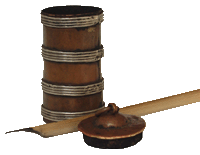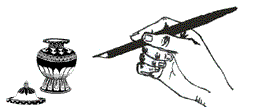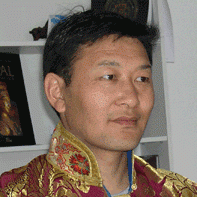Home » Tibetan script » Origins of Tibetan calligraphy
Origins of Tibetan calligraphy

The Tibetan Acarya Thomi Sambotha was the forerunner of Tibetan script design at the end of the 17th century. Since the beginning of the second diffusion of Buddhist doctrine, Kyoungpo Youthri Bar set up calligraphic patterns with a printed letters format, as they were established in the tradition of the great translator Kawa Peltseg. He then separated them depending on their size, and established their lineage.
At the time, these letters went through nearly nine successive modifications. The introduction of this sizing and lineage system by Youthri, along with the existing xylography, contributed to the progressive dissemination of printed letters, which hasn’t changed since.
In 1982, the well-known calligrapher Acarya Meunlam Gyamtso drew these letters for beginners. He also consulted Pang Lotsawa’s original book in the Labrang Tashikyil monastery, as well as Jigmé Wangpo’s calligraphic specimens (the second incarnation of Jamyang Shepa), which are styles from the same tradition.
For his calligraphic work, Meunlam Gyamtso drew his inspiration both from this tradition and from Mougué Samten’s teaching, the great master with whom he had studied since he was young. Here he drew the characters design according to a 9-square cross-ruling system. He then broke these down into “branches”, which he named after “sDom tshig” accompanied by an annotation.
In addition to drawing “heads”, “arms” and other “legs”, which depend on the shape, point, and bevel of the nib used, some words of explanation are contributed thanks to the author’s great experience.
